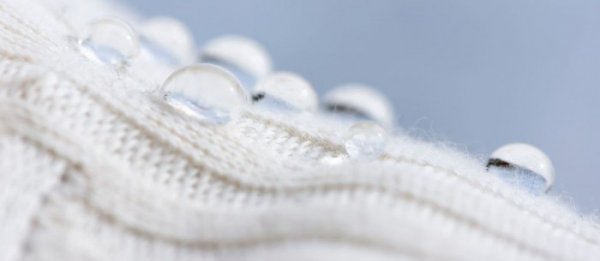Although many organizations have successfully developed coatings that make the fabric waterproof and breathable, most of these solutions incorporate toxic chemicals. But now, scientists have found better alternative solutions from environmentally friendly coatings made of wax and starch.

To make this new coating, researchers from Aalto University in Finland first extracted carnauba wax from palm leaves. It is widely used in products such as car protection wax, medicines and food, and can be said to be a relatively harmless raw material.
The research team melted and decomposed the wax in water to form a negatively charged wax particle solution. Since the cellulose constituting the natural fabric fiber is also negatively charged, a positively charged buffer must be added in the middle to make the wax particles adhere to the fiber.

Although previous research has shown that a protein called polylysine can do the job, but because this protein is very expensive, scientists have found a material that makes starch a lot cheaper.
The resulting wax / starch solution is applied to organic fabrics, such as viscose, tencel, cotton, and cotton, by methods including dip coating, spray coating, and brush coating. In all cases, this treatment makes the material hydrophobic, while maintaining its breathability and natural feel. In contrast, when the same type of fabric is treated with traditional waterproof coatings, its breathability decreases.
Unfortunately, in its current form, the Aalto coating does not withstand detergent washing well. Therefore, it is recommended to limit its use to items that are not washed frequently, such as jackets, and consumers can spray new paint on them after each wash.
Related papers were published in Carbohydrate Polymers.
A Tape Measure or Measuring Tape is a flexible Ruler and used to measure distance.
It consists of a ribbon of cloth, plastic, fibre glass, or metal strip with linear-measurement markings. It is a common measuring tool. Its design allows for a measure of great length to be easily carried in pocket or toolkit and permits one to measure around curves or corners. Today it is ubiquitous, even appearing in miniature form as a novelty item sb use tape measures in lengths of over100m.
There are two basic types of tape measures with cases, spring return pocket tape measures and long tape measures. Spring return pocket tape measures will generally fit in a pocket. They are small, the case is up to about three inches across. The tape is returned to the case by a spring mechanism. Pocket tape measures have a tape one foot to fifteen feet in length and ¼ to ¾ inches across. When most people think of a tape measure, they are thinking of the pocket tape measure.A second tape measure design is what is called the long tape. These are cased tape measures with tapes of 25, 50, 75, 100, 200, 300, and even 500 feet in length, designed for engineers and builders. Because surveying was usually done in rods, surveyors use long tapes of 33 feet (2 rods), and 66 feet (4 rods). Surveyors also used 49½ feet of a 50-foot tape for 3 rods and 99 feet of a 100-foot tape measure for 6 rods. Long tapes instead of being returned by a spring, were usually returned by hand crank.
Mm Tape Measure,Tape Measure For Dummies,Rolling Tape Measure,Three Stop Measuring Tape
Oukelong Tools Co.,Ltd , https://www.oukelongtape.com